Find Help
More Items From Ergsy search
-
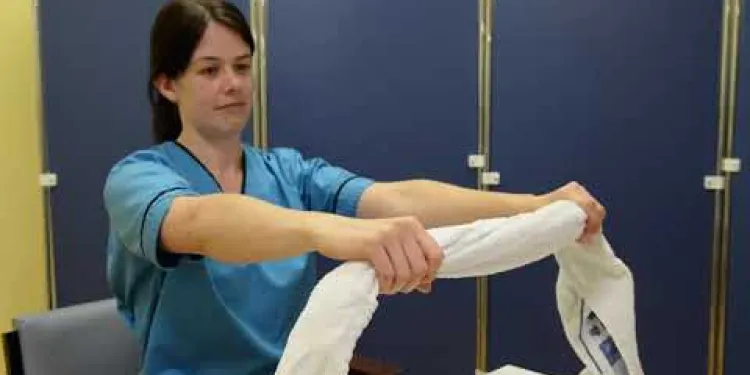
Elbow
Relevance: 100%
-
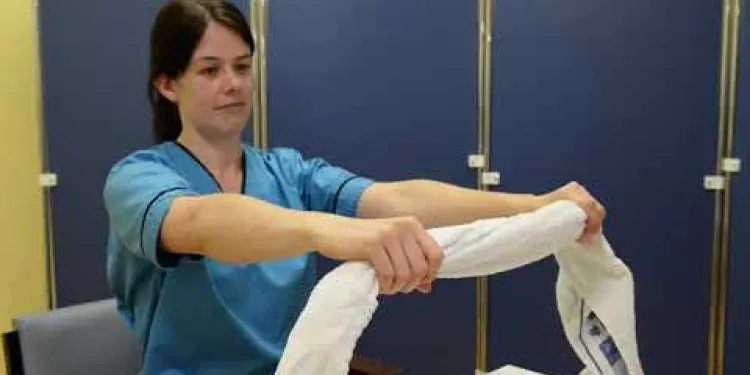
Elbow
Relevance: 100%
-

Tennis Elbow
Relevance: 93%
-
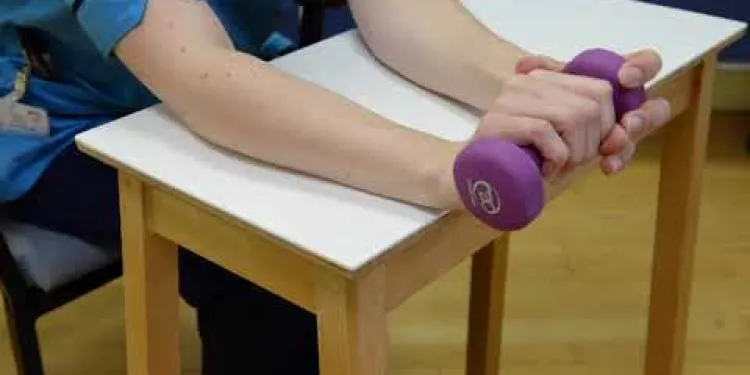
Elbow Eccentric Strengthening Exercise
Relevance: 84%
-
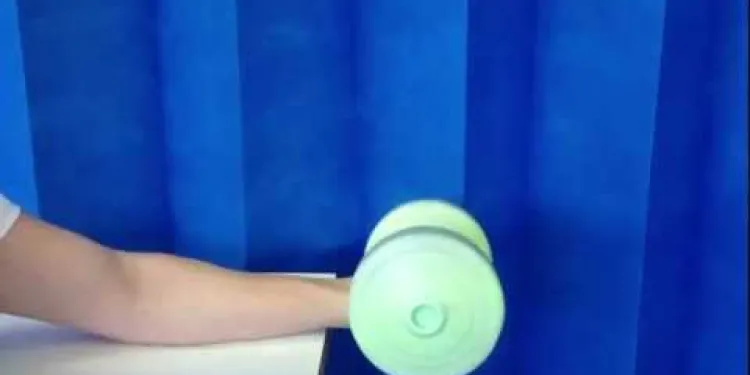
Eccentric loading forearm extensors (for tennis elbow)
Relevance: 75%
-
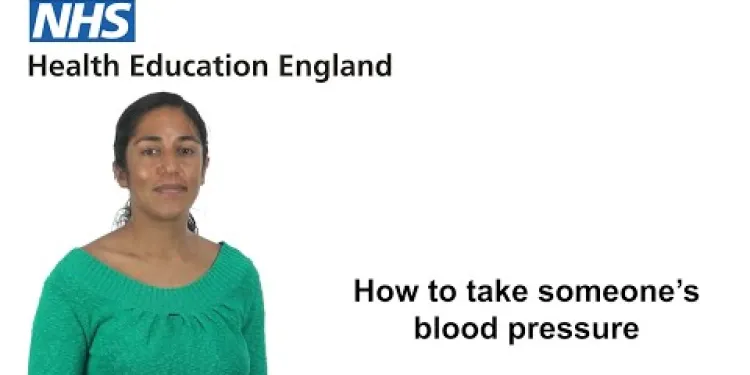
How to take someone's blood pressure
Relevance: 19%
-

Frozen Shoulder Anterior Shoulder Stretch
Relevance: 17%
-

How can I prevent spreading my cold to others?
Relevance: 16%
-

Psoriasis | NHS
Relevance: 16%
-
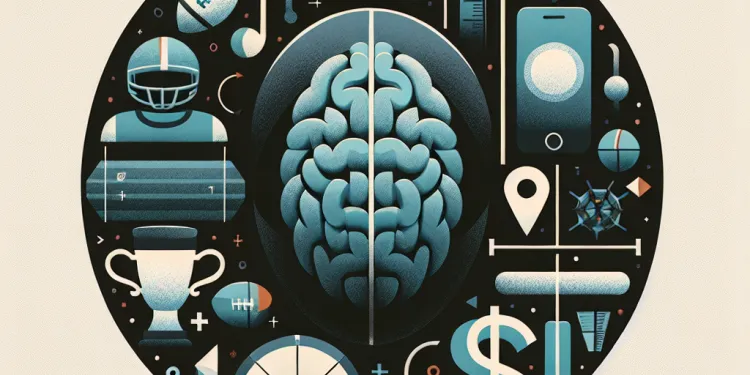
What causes concussions in rugby?
Relevance: 14%
-

Are there specific exercises that can help with Carpal Tunnel Syndrome?
Relevance: 13%
-

An Introduction to Decompression Illness: Signs & Symptoms”. Dr Roland Armes
Relevance: 11%
-

Pressure ulcer prevention: A guide for patients, carers and healthcare professionals
Relevance: 11%
-

Understanding Seasonal Flu: Prevention and Treatment
Relevance: 11%
-
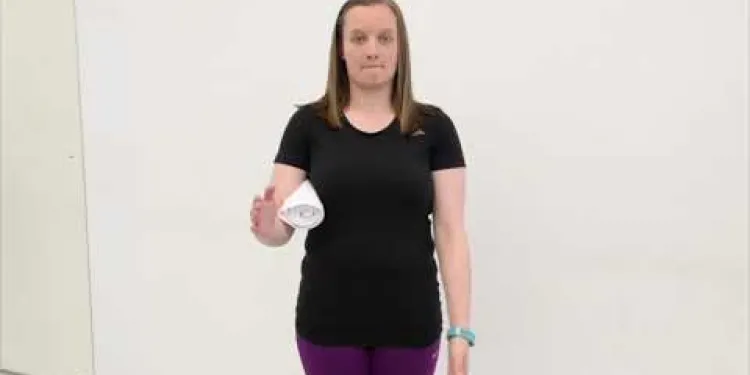
Frozen Shoulder Isometric External Rotation
Relevance: 11%
-

Managing and treating your child's eczema
Relevance: 10%
-
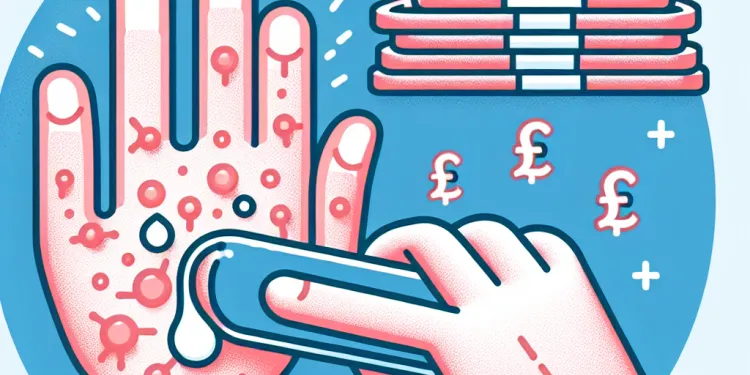
What are common symptoms of eczema?
Relevance: 10%
-
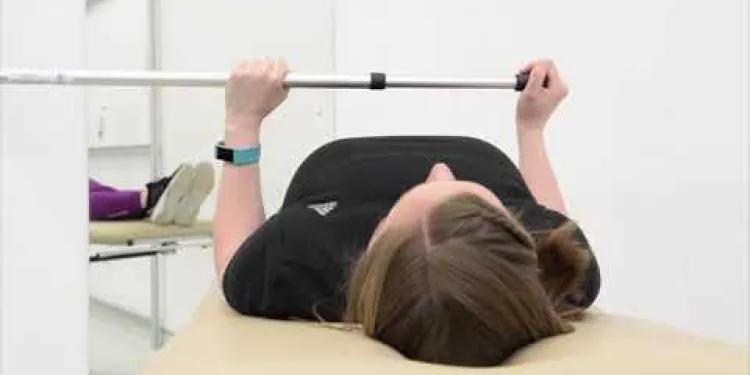
Frozen Shoulder Assisted Lateral Rotation
Relevance: 10%
-

Symptoms of coeliac disease
Relevance: 10%
-

How to treat psoriasis
Relevance: 10%
-

Shoulder Exercises 1
Relevance: 10%
-

What are topical treatments for psoriasis?
Relevance: 10%
-

What causes psoriasis?
Relevance: 10%
-

How can eczema be diagnosed?
Relevance: 10%
-

What are some preventive measures against H3N2?
Relevance: 10%
-
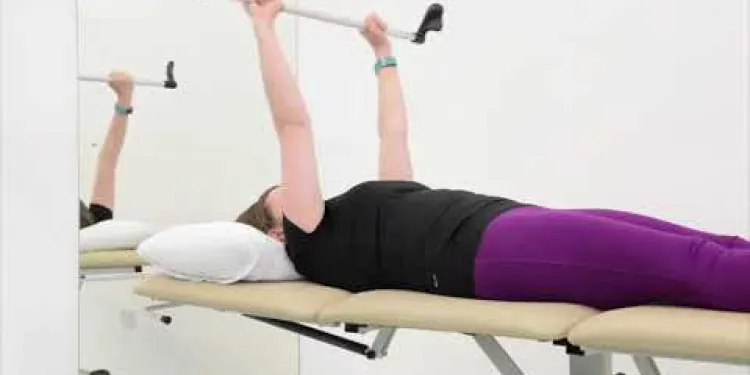
Frozen Shoulder Assisted Flexion
Relevance: 10%
-

How do I deal with burns and scalds? (9 to 30 months) | NHS
Relevance: 10%
-
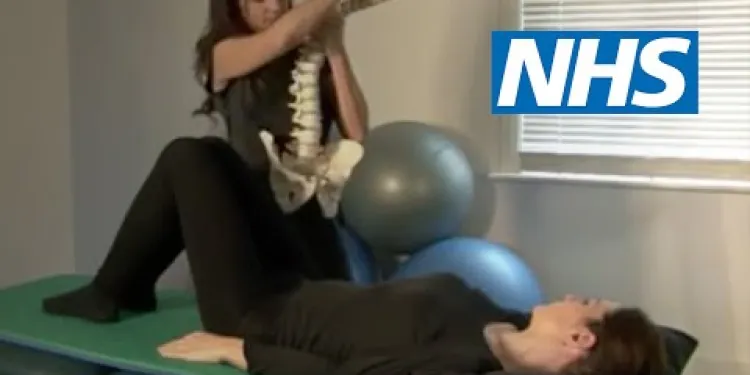
Exercises for sciatica: herniated or slipped disc | NHS
Relevance: 10%
-

Is there a cure for psoriasis?
Relevance: 10%
-

Can over-the-counter treatments help with psoriasis?
Relevance: 10%
-

How is H3N2 transmitted?
Relevance: 10%
-

How can I protect myself from H3N2 at home?
Relevance: 10%
-
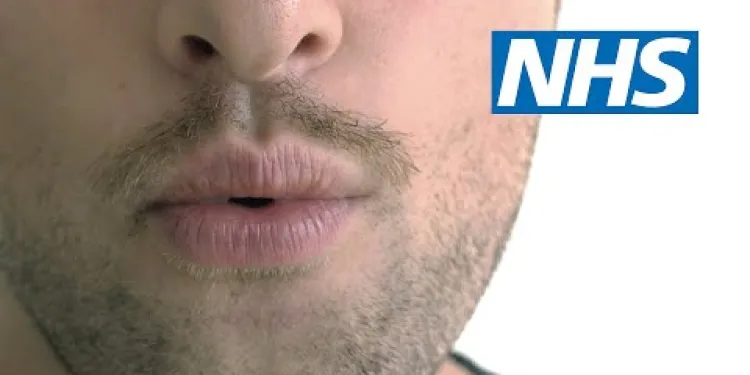
Tips for breathlessness | NHS
Relevance: 9%
-

How to put someone into the recovery position | NHS
Relevance: 7%
-

Frozen Shoulder Lateral Rotation
Relevance: 6%
-
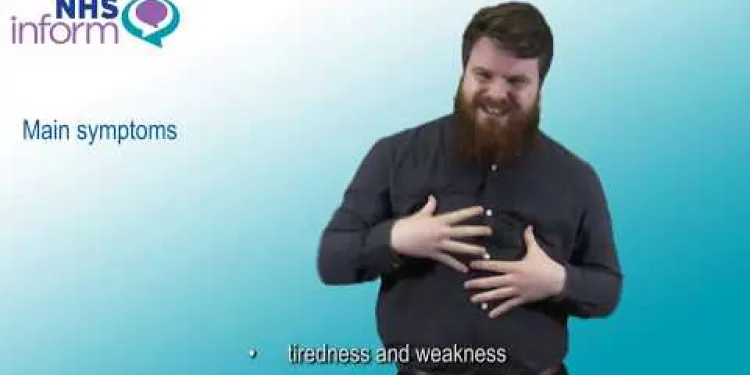
Symptoms of flu (influenza)
Relevance: 6%
-

What is eczema? General Information
Relevance: 6%
-
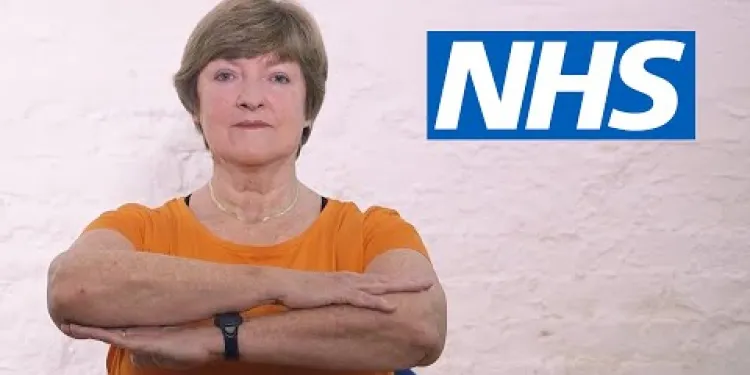
Pilates for back pain: Seated waist twist | NHS
Relevance: 6%
-

What safety precautions should be taken when using mobility equipment?
Relevance: 5%
The Elbow: An Overview
The elbow is a crucial hinge joint that connects the upper arm to the forearm. It plays a vital role in allowing the arm to bend and extend, making everyday tasks such as lifting, throwing, or even typing possible. Understanding the anatomy and function of the elbow is essential for maintaining its health and preventing injuries.
Anatomy of the Elbow
The elbow is composed of three bones: the humerus (upper arm bone), the radius, and the ulna (the two bones of the forearm). These bones are joined together by strong ligaments, including the ulnar collateral ligament and radial collateral ligament, which provide stability. The joint itself is covered by articular cartilage, allowing smooth movement between the bones.
The Muscles and Tendons
Several muscles and tendons surround the elbow, contributing to its range of motion and strength. The biceps and triceps are the primary muscles responsible for elbow flexion and extension. The brachialis and brachioradialis also assist in these movements. Tendons, such as the distal biceps tendon and the triceps tendon, anchor these muscles to the bones.
Common Elbow Injuries
Elbow injuries are prevalent, especially among athletes and individuals engaged in repetitive arm activities. Common injuries include tennis elbow (lateral epicondylitis), golfer's elbow (medial epicondylitis), and elbow dislocations. These conditions can result in pain, swelling, and reduced functionality, impacting daily life.
Preventing and Treating Elbow Injuries
Preventing elbow injuries involves proper conditioning, stretching, and using appropriate techniques during activities. Wearing elbow supports or braces can also provide added protection. In the event of an injury, rest, ice, compression, and elevation (RICE) are initial treatment steps. Physical therapy may be recommended for rehabilitation, while severe cases might require medical intervention or surgery.
Conclusion
Understanding the elbow's anatomy and function is essential for proper care and injury prevention. By being mindful of the stresses placed on this intricate joint and taking proactive measures, individuals can maintain their elbow health and continue to perform daily activities with ease.
Understanding Elbow Anatomy and Injury Prevention
Anatomy of the Elbow
The elbow is a complex joint that connects the upper arm to the forearm, comprising three bones: the humerus in the upper arm, and the radius and ulna in the forearm. This joint plays a crucial role in arm movement, allowing for flexion, extension, pronation, and supination. The elbow's stability relies on a series of ligaments, tendons, and muscles, including the biceps and triceps, which enable its extensive range of motion.
Common Elbow Issues
In the UK, common elbow issues include conditions like tennis elbow (lateral epicondylitis), golfer's elbow (medial epicondylitis), bursitis, and arthritis. Tennis elbow is particularly prevalent among athletes and manual workers, characterized by pain on the outside of the elbow due to overuse. Similarly, golfer's elbow affects the inner side of the elbow. Both conditions result from repetitive strain and can significantly impact day-to-day activities.
Elbow Injury Prevention
To prevent elbow injuries, it is essential to engage in exercises that strengthen the muscles around the joint while ensuring proper technique during sports or manual tasks. Warm-up routines that include stretching and strengthening exercises can protect the elbow. Wearing appropriate protective gear and taking regular breaks during repetitive tasks can also help minimize the risk. Consulting a physiotherapist or a coach for guidance is advisable for individuals who regularly participate in activities that put a strain on the elbow.
Treatment and Recovery
For those experiencing elbow pain, initial treatment may include rest, ice packs to reduce inflammation, and over-the-counter pain relief. Physiotherapy is often recommended to aid in recovery through specialized exercises and treatments. In more severe cases, medical intervention, such as corticosteroid injections or surgery, may be necessary. Early intervention can improve recovery times and prevent further damage.
The Elbow: Easy to Understand
Your elbow is a special joint that lets your arm bend and straighten. It helps you do things like lift and throw. Knowing about your elbow can help you keep it healthy and avoid getting hurt.
What is the Elbow Made Of?
Your elbow has three main bones. These are your upper arm bone (humerus) and two forearm bones (radius and ulna). Strong bands called ligaments help hold these bones together. The elbow has a smooth cover so the bones can move easily.
Muscles and Tendons Around the Elbow
Many muscles and tendons work with your elbow. The big muscles, biceps and triceps, help you bend and straighten your arm. Other muscles, like the brachialis and brachioradialis, help too. Tendons connect these muscles to your bones.
Common Elbow Problems
A lot of people hurt their elbows. This is common if you play sports or use your arm a lot. Some problems are tennis elbow, golfer's elbow, and elbow dislocations. These can cause pain and make it hard to use your arm.
How to Avoid and Treat Elbow Problems
To keep your elbow safe, exercise it and stretch it. Use good methods when doing activities. You can wear elbow supports to protect it. If you get hurt, rest your elbow, put ice on it, and wrap it. Lift it up if you can. Sometimes you might need to see a doctor or do exercises to get better.
Summary
Knowing how your elbow works helps you take care of it. Be careful with your elbow so you can keep doing things you enjoy every day.
Understanding Elbow Anatomy and How to Prevent Injury
What Is the Elbow?
The elbow helps you move your arm. It connects the top part of your arm to the bottom part. The elbow has three bones: one in the upper arm and two in the forearm. The elbow helps you bend, straighten, and twist your arm. Muscles and tendons around the elbow help it move and stay strong.
Common Elbow Problems
Many people in the UK have elbow problems. Tennis elbow and golfer's elbow are two common ones. Tennis elbow hurts the outside of the elbow. Golfer's elbow hurts the inside. These problems happen because of doing the same movement too much, like playing sports or working with tools. This can make it hard to do everyday things.
How to Keep Your Elbows Safe
To keep your elbows safe, do exercises that make the muscles around them stronger. Always warm up and stretch before playing sports or doing heavy work. Wear protective gear when needed. Take breaks to rest your arms. It’s good to ask a physiotherapist or coach for advice if you do activities that use your elbows a lot.
How to Help Elbows Get Better
If your elbow hurts, you can rest and put ice on it to help the swelling go down. You can also take pain medicine from the shop. Physiotherapy can help your elbow heal with special exercises. If it's very bad, a doctor might give you injections or do surgery. It's important to get help early to heal faster and stop more damage.
Frequently Asked Questions
What is tennis elbow?
Tennis elbow, also known as lateral epicondylitis, is a condition caused by inflammation of the tendons in the elbow due to overuse. It is common in people who play racquet sports, but it can affect anyone who uses their arms repeatedly.
What are the symptoms of tennis elbow?
Symptoms of tennis elbow include pain and tenderness around the outside of the elbow. This pain may extend into the forearm and wrist, and it typically worsens with activity involving the arm.
How is tennis elbow diagnosed?
A doctor will usually diagnose tennis elbow based on a physical examination and the patient's history. Imaging tests such as X-rays or MRI scans may be used to rule out other conditions.
What causes tennis elbow?
Tennis elbow is often caused by repetitive motions of the wrist and arm, which lead to stress and microscopic tears in the tendons connecting the forearm muscles to the elbow.
How is tennis elbow treated?
Treatment for tennis elbow includes rest, ice, and over-the-counter pain relievers. Physical therapy and exercises to strengthen the forearm muscles may also be recommended. In severe cases, a doctor might suggest injections or even surgery.
Can tennis elbow be prevented?
To prevent tennis elbow, it is advisable to use proper techniques and equipment when performing activities. Regular strengthening and stretching exercises for the forearms can also reduce the risk.
Is tennis elbow the same as golfer's elbow?
No, tennis elbow affects the outer part of the elbow, while golfer's elbow, or medial epicondylitis, affects the inner part. Both conditions result from overuse but involve different tendons.
How long does it take to recover from tennis elbow?
Recovery time varies; mild cases may improve in a few weeks, but severe cases might take several months to fully heal. Following a treatment plan diligently can speed up recovery.
Can I continue playing sports with tennis elbow?
It's often recommended to rest and avoid activities that worsen the pain until symptoms improve. Consult with a healthcare professional to devise a safe return-to-play plan.
Is tennis elbow a chronic condition?
For some people, tennis elbow can become chronic if not treated properly. Early intervention and adherence to treatment can help prevent chronic issues.
Do ergonomic aids help with tennis elbow?
Yes, ergonomic aids such as braces or elbow straps can reduce strain on the elbow and help alleviate symptoms, especially when returning to activities.
Are there alternative therapies for tennis elbow?
Some people find relief with alternative therapies like acupuncture, massage, or ultrasound treatments, but it's important to consult with a healthcare provider before trying these options.
Can diet affect tennis elbow recovery?
While diet itself does not directly affect recovery, maintaining a balanced diet with adequate nutrients can support overall health and healing processes.
Are there exercises I should avoid with tennis elbow?
Avoid exercises that strain the elbow, such as push-ups or lifting heavy weights, until the pain subsides and you receive guidance from a healthcare professional.
When should I see a doctor about elbow pain?
If the pain is severe, persistent, or accompanied by swelling or loss of motion, it's advisable to see a doctor for an accurate diagnosis and appropriate treatment.
What is tennis elbow?
Tennis elbow is when your elbow hurts. It happens when you use your arm too much.
If your elbow hurts, try these:
- Rest your arm
- Put ice on it
- Ask a grown-up for medicine
If it still hurts, tell a doctor.
Tennis elbow happens when the elbow gets sore and hurts. It is because the part that connects muscles to the bone gets hurt. This can happen if you use your arm a lot, like when playing tennis. But it can happen to anyone who uses their arm too much.
What happens if you have tennis elbow?
Tennis elbow can make your arm hurt. Here are some signs:
- Pain on the outside of your elbow.
- Trouble moving your arm.
- Your elbow might feel weak.
- It can hurt to lift or hold things.
If your elbow hurts, use a cold pack or talk to a grown-up for help. A doctor or a therapist might help you feel better.
If you have tennis elbow, your elbow might hurt. It can hurt a lot on the outside of your elbow. Your arm and wrist might hurt too. It feels worse when you use your arm.
Here are some things that might help:
- Rest your arm.
- Put ice on your elbow.
- Try gentle arm exercises.
- Ask someone to help you.
How do doctors find out if someone has tennis elbow?
If your arm hurts, you might have tennis elbow. A doctor can help find out. The doctor will ask questions about how your arm feels. They might press on your arm or ask you to move it. This helps them understand if it's tennis elbow.
Tools that can help:
- Pictures: Doctors might use pictures to explain what tennis elbow is.
- Simple Questions: The doctor will use simple words and questions to make it easy.
A doctor can find out if you have tennis elbow by looking at your elbow and asking you questions. Sometimes, the doctor might use an X-ray or MRI scan to make sure you don't have a different problem.
What makes tennis elbow happen?
Tennis elbow hurts the elbow. It happens when you use your arm a lot. Activities like playing tennis or painting can cause it. Your elbow might hurt if you do these activities for too long.
If your elbow hurts, you can rest. Ice packs can help too. Ask a doctor for advice if it keeps hurting.
Try using big pens if writing hurts. Use tools that make jobs easier. Take breaks when you use your arms a lot.
Tennis elbow happens when you do the same wrist and arm movements again and again. This can cause tiny tears and stress where the arm muscles connect to your elbow.
How do you fix tennis elbow?
Tennis elbow can make your arm hurt. Here are some easy ways to help it get better:
- Rest: Let your arm take a break. Don't use it too much.
- Ice: Put a cold pack on your elbow to stop swelling. Do this for 15-20 minutes.
- Pain Relief: You can take medicine like ibuprofen to help with pain.
- Arm Brace: Wear a special band on your arm to give it support.
- Stretching: Do simple exercises to make your arm stronger. A doctor can show you how.
Tips: If your elbow still hurts, talk to a doctor. They can help you feel better.
If your elbow hurts from playing tennis, here are some things that can help:
- Take a break and rest your arm.
- Put ice on your elbow to make it feel better.
- You can buy medicine at the store to help with the pain.
Doing exercises with a physical therapist can make your arm stronger.
If your arm still hurts a lot, a doctor may give you a shot or do an operation to fix it.
If reading is hard, try using a ruler or your finger to follow along. Audiobooks can be helpful, too!
Can we stop tennis elbow from happening?
To stop tennis elbow, use the right way and tools when you do things. You can also do exercises to make your arm muscles strong and stretchy. This can help you stay safe.
Are tennis elbow and golfer's elbow the same?
No, they are not the same. Tennis elbow hurts the outside of your elbow. Golfer's elbow hurts the inside of your elbow.
Here are some ways to help understand:
- Think of where it hurts:
- Tennis elbow: outside
- Golfer's elbow: inside
- Look at pictures of elbows to see the difference.
- Ask someone to help explain it to you.
Tennis elbow hurts the outside of your elbow. Golfer's elbow hurts the inside. Both happen when you use your arm too much, but they affect different parts.
How long does it take to get better from tennis elbow?
Getting better takes different times for everyone. If it's not too bad, you might feel better in a few weeks. But if it's really bad, it can take many months to get better. Following the doctor's plan can help you heal faster.
Can I keep playing sports if I have tennis elbow?
Tennis elbow is when your elbow hurts because of too much activity. It's important to be careful.
Here are some tips:
- Rest your arm if it hurts.
- Try using an ice pack to reduce pain.
- Ask a physiotherapist for exercises to help.
- Slow down if it gets painful.
Speak to a doctor for advice before continuing with sports. They can tell you what is safe to do.
It's a good idea to rest and not do things that make the pain worse. Wait until you feel better. Talk to a doctor or nurse to make a safe plan for getting back to your activities.
Can tennis elbow last a long time?
Tennis elbow is when your elbow hurts because you used it too much. Sometimes, it can last for a long time. Here are some tips to help:
- Rest your arm to let it heal.
- Use an ice pack to reduce pain.
- Ask a doctor for advice and medicine.
- Try gentle exercises for your arm.
If the pain doesn’t go away, see your doctor for more help.
If you don't treat tennis elbow, it can keep hurting for a long time. Getting help early and sticking to the treatment can stop it from becoming a long-term problem.
Can special tools help with tennis elbow?
Yes, special tools like braces or elbow straps can help your elbow feel better. They can make the pain less and support your elbow, especially when you start using it again for activities.
Can other treatments help with tennis elbow?
Tennis elbow can hurt your arm. You can try different ways to feel better. Here are some ideas:
- Rest: Give your arm a break. Don't use it too much.
- Ice: Put ice on your elbow for pain relief.
- Stretching: Gently stretch your arm muscles.
- Brace: Wear an arm brace to support your elbow.
- Massage: A gentle massage can help.
If you need help, talk to a doctor or a therapist. They can give you advice. There are also apps and videos online that can help you know what to do.
Some people feel better with different kinds of treatments. These include acupuncture, massage, or using ultrasound. It is important to talk to a doctor before trying these treatments.
Can what we eat help tennis elbow get better?
Eating healthy food can help your body get better. A good diet doesn't heal you, but it helps your body stay strong and recover. Make sure to eat different kinds of food to get the nutrients you need.
What exercises should I not do if I have tennis elbow?
If you have tennis elbow, there are some exercises you should not do. These exercises can make your elbow hurt more.
It is important to give your elbow a rest. You might need to stop doing things that hurt, like lifting heavy things or playing sports. Your doctor or a physiotherapist can tell you the best exercises to help you get better.
Tools that can help you:
- Use an ice pack on your elbow to help with pain.
- A brace or strap can help support your elbow.
Do not do exercises that hurt your elbow, like push-ups or lifting heavy things. Wait until your elbow feels better and a doctor or nurse says it is okay.
When should I see a doctor if my elbow hurts?
If your elbow is sore:
- Go to the doctor if it hurts a lot.
- See the doctor if you can't move it well.
- Tell an adult if it looks swollen.
Remember, it is good to ask for help. You can also:
- Use ice packs to make it feel better.
- Rest your elbow.
- Talk to someone you trust about your pain.
If the pain is very strong, does not go away, or if the area is swollen or you can't move it well, it's a good idea to see a doctor. They can tell you what is wrong and how to make it better.
Useful Links
- Ergsy carfully checks the information in the videos we provide here.
- Videos shown by Youtube after a video has completed, have NOT been reviewed by ERGSY.
- To view, click the arrow in centre of video.
- Most of the videos you find here will have subtitles and/or closed captions available.
- You may need to turn these on, and choose your preferred language.
- Go to the video you'd like to watch.
- If closed captions (CC) are available, settings will be visible on the bottom right of the video player.
- To turn on Captions, click settings .
- To turn off Captions, click settings again.
More Items From Ergsy search
-

Elbow
Relevance: 100%
-

Elbow
Relevance: 100%
-

Tennis Elbow
Relevance: 93%
-

Elbow Eccentric Strengthening Exercise
Relevance: 84%
-

Eccentric loading forearm extensors (for tennis elbow)
Relevance: 75%
-

How to take someone's blood pressure
Relevance: 19%
-

Frozen Shoulder Anterior Shoulder Stretch
Relevance: 17%
-

How can I prevent spreading my cold to others?
Relevance: 16%
-

Psoriasis | NHS
Relevance: 16%
-

What causes concussions in rugby?
Relevance: 14%
-

Are there specific exercises that can help with Carpal Tunnel Syndrome?
Relevance: 13%
-

An Introduction to Decompression Illness: Signs & Symptoms”. Dr Roland Armes
Relevance: 11%
-

Pressure ulcer prevention: A guide for patients, carers and healthcare professionals
Relevance: 11%
-

Understanding Seasonal Flu: Prevention and Treatment
Relevance: 11%
-

Frozen Shoulder Isometric External Rotation
Relevance: 11%
-

Managing and treating your child's eczema
Relevance: 10%
-

What are common symptoms of eczema?
Relevance: 10%
-

Frozen Shoulder Assisted Lateral Rotation
Relevance: 10%
-

Symptoms of coeliac disease
Relevance: 10%
-

How to treat psoriasis
Relevance: 10%
-

Shoulder Exercises 1
Relevance: 10%
-

What are topical treatments for psoriasis?
Relevance: 10%
-

What causes psoriasis?
Relevance: 10%
-

How can eczema be diagnosed?
Relevance: 10%
-

What are some preventive measures against H3N2?
Relevance: 10%
-

Frozen Shoulder Assisted Flexion
Relevance: 10%
-

How do I deal with burns and scalds? (9 to 30 months) | NHS
Relevance: 10%
-

Exercises for sciatica: herniated or slipped disc | NHS
Relevance: 10%
-

Is there a cure for psoriasis?
Relevance: 10%
-

Can over-the-counter treatments help with psoriasis?
Relevance: 10%
-

How is H3N2 transmitted?
Relevance: 10%
-

How can I protect myself from H3N2 at home?
Relevance: 10%
-

Tips for breathlessness | NHS
Relevance: 9%
-

How to put someone into the recovery position | NHS
Relevance: 7%
-

Frozen Shoulder Lateral Rotation
Relevance: 6%
-

Symptoms of flu (influenza)
Relevance: 6%
-

What is eczema? General Information
Relevance: 6%
-

Pilates for back pain: Seated waist twist | NHS
Relevance: 6%
-

What safety precautions should be taken when using mobility equipment?
Relevance: 5%


